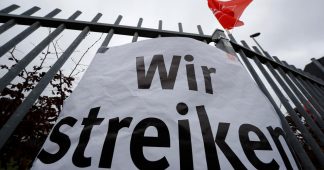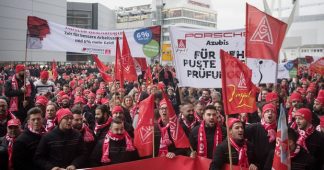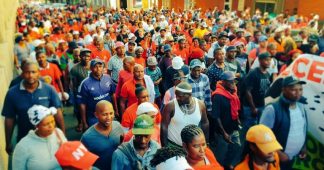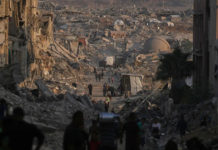5 years have passed and the survivors and relatives of the victims of the Rana Plaza collapse continue to wait for justice
By V Arun Kumar / The Dawn News / April 24, 2018
Structural instability did not kill 1,138 workers at Rana Plaza, it was the lust for profit that led to the ‘industrial massacre’. It was not Benetton or Bonmarché or Walmart who made the clothes, it was the labour of these thousands of garment workers that generated the profits and allowed these companies to thrive. While the profits soared for the brands, nothing much changed for the workers who produced.
A few miles away from the where the workers were killed, at a shiny office building, the manufacturers association- Bangladesh Garments Manufacturers and Exporters Association (BGMEA) – are projecting a growth of £35.5 billion by 2021. The garment industry constitute around 82% of the nation’s exports which makes Bangladesh, the world’s second-largest garment producer.

When Raza Plaza collapse on April 24, 2013, killing thousands, the brands and the manufacturers rushed to save their faces. The Accord on Factory and Building Safety in Bangladesh and Alliance for Bangladesh Worker safety, was signed by some of the clothing brands. While the accords call for improved safety standards, which slightly improved since the collapse, many crucial questions about the wages and working conditions remain unanswered.
The minimum wage remains 5,300 Bangladeshi Taka (£ 44) per month – the lowest in the world – and the vast majority of workers continue to work without contracts and job security. Most of the workers are forced to work 14-16 hours a day seven days a week, with some workers finishing at 3am only to start again the early in the morning. The garment industrial workforce is comprised of more than 85 % women, and the factories lack basic amenities for them.
These questions will continue to exist and unfortunately, more workers will continue to perish, unless the workers, and not the profits, have control over the production.
On the fifth year of the ‘industrial massacre’, thousands of workers, trade union activists, and family members gathered at the Jurain graveyard demanding justice for the victims of Savar building collapse. They laid flowers beneath the pair of hands holding hammer and sickle at the site, depicting the struggle and resistance of the workers.
It been half a decade and the survivors and relatives of the victims continue to await for justice and compensation promised.
“This was no accident. It was a murder under broad daylight,” said Sultana Kamal, eminent rights activist. “Justice should have been delivered in 1 year, but instead the trial has been hanging at court for the last two years. We know, the government can do more if it wants.”
Reiterating what Sulatana said, Jolly Talukder, general secretary of Garments Workers’ Trade Union Centre demanded a quick trial and justice.
Even after five years, the survious continue to face the horror of the incident, and find it difficult to piece their life together.
“The injured workers are living with the mental and physical scars of Rana Plaza,” said Amirul Haque Amin, president of the National Garment Workers Federation, Bangladesh’s largest union. “Most are daily wage workers now, with injuries that make it difficult for them to take up full time jobs. The compensation they received dried up very fast, leaving with them with nothing.”











